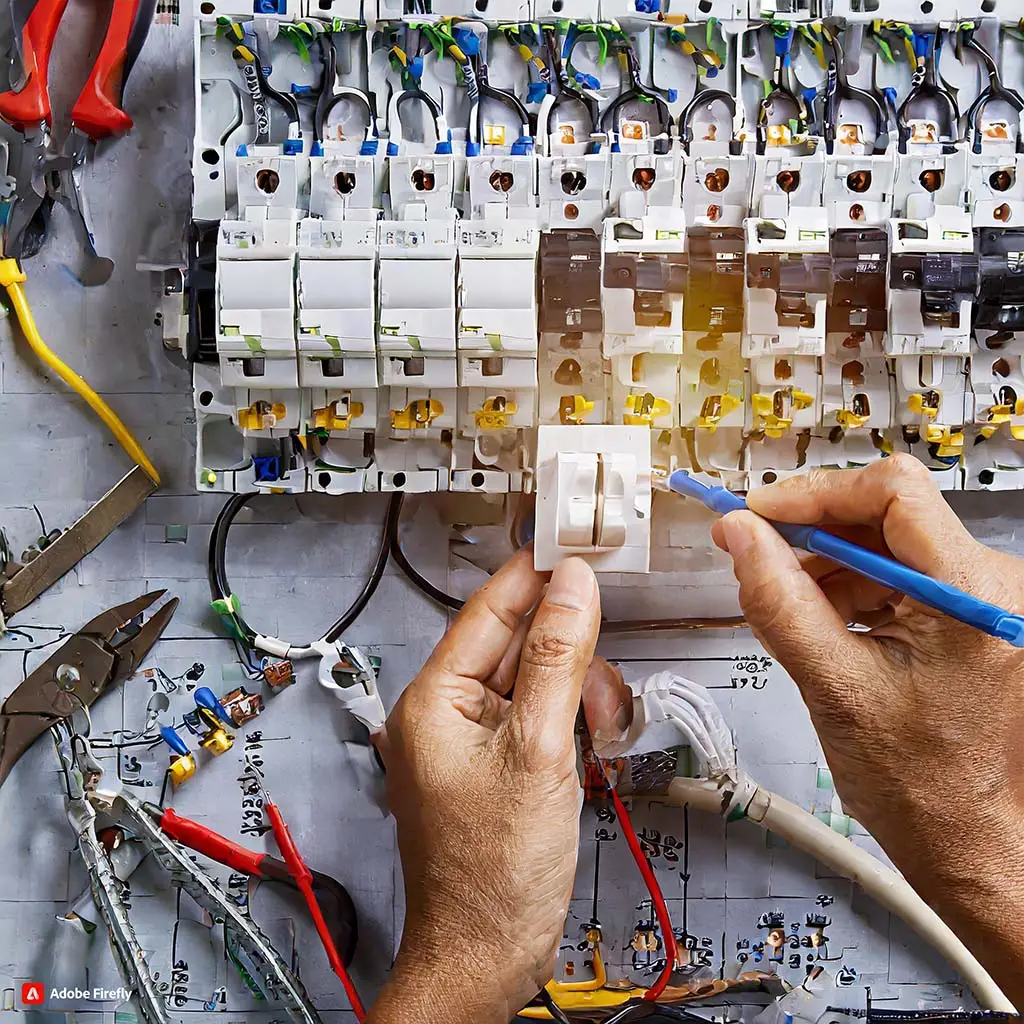Surge Protective Devices (SPDs) play a crucial role in safeguarding electrical installations from transient overvoltages, commonly known as power surges. These surges can pose a significant risk to electrical systems and equipment, making SPDs an essential component of modern electrical infrastructure.
What Exactly are SPDs?
SPDs, also known as surge protectors or surge suppressors, are devices designed to protect electrical installations from sudden voltage spikes caused by transient overvoltages. Every property owner should receive a Seller’s Property Disclosure Statement (SPDS) detailing the presence and condition of SPDs within the property.
What Do SPDs Do?
SPDs act as barriers against voltage spikes, ensuring the integrity of the electrical installation, including the consumer unit, wiring, and accessories. They are particularly effective in mitigating the impact of electrical surges on sensitive electronic equipment and appliances.
Examples of SPDs
Common surge-protective components used in manufacturing SPDs include metal oxide varistors (MOVs), avalanche breakdown diodes (ABDs), and gas discharge tubes (GDTs). These components help dissipate excess voltage safely, preventing damage to connected devices.
Benefits of SPDs
SPDs offer numerous advantages, including lower clamping voltages, enhanced protection against voltage surges, and minimal maintenance requirements. Strikes orb SPDs, for instance, can be installed inline, minimizing cable length and achieving optimal clamping voltage.
Types of SPDs
SPDs come in various types, including Type 1, Type 2, and Type 3. Each type offers specific protection levels against different surge events, ranging from direct lightning strikes to transient voltage surges.
SPD Testing and Installation
SPDs undergo rigorous testing to ensure their effectiveness in real-world scenarios. Testing involves a simple two-wire test to verify the device’s ability to detect and respond to voltage fluctuations. Proper installation is essential for maximizing SPD performance and longevity.
Importance of SPDs in Different Circuits
SPDs are available for both AC and DC circuits, with each type tailored to the specific requirements of the circuit. AC SPDs protect against voltage spikes in alternating current circuits, while DC SPDs offer similar protection for direct current circuits, such as those found in solar photovoltaic (PV) systems.
Compliance and Recommendations
While not legally mandatory, SPDs are highly recommended for ensuring electrical safety and reducing the risk of damage to equipment and property. Compliance with relevant standards, such as BS7671, ensures proper installation and protection against overcurrent events.
Limitations and Considerations
Despite their effectiveness, SPDs may not provide complete protection against direct lightning strikes or massive electrical surges. However, they offer substantial defense against most surge events and are an integral part of comprehensive electrical protection strategies.
Conclusion
Surge Protective Devices (SPDs) play a crucial role in safeguarding electrical installations and equipment from transient overvoltages. With their ability to mitigate the impact of voltage spikes and ensure electrical safety, SPDs are indispensable components of modern electrical systems. Investing in high-quality SPDs is essential for protecting valuable assets and ensuring uninterrupted operations, whether for residential, commercial, or industrial applications.
Frequently Asked Questions (FAQs) about Surge Protective Devices (SPDs):
- What is the purpose of Surge Protective Devices (SPDs)?
Surge Protective Devices are designed to safeguard electrical installations and equipment from transient overvoltages, commonly known as power surges. They divert excess voltage away from critical loads, minimizing the risk of damage and ensuring electrical safety. - How do Surge Protective Devices (SPDs) work?
SPDs detect sudden voltage spikes and safely divert excess energy to the ground, preventing it from reaching connected devices. They use components like metal oxide varistors (MOVs), avalanche breakdown diodes (ABDs), and gas discharge tubes (GDTs) to dissipate the surge energy. - Where are Surge Protective Devices (SPDs) typically installed?
SPDs are installed at various points in electrical systems, including consumer units, distribution panels, and individual circuits. They can protect residential, commercial, and industrial properties and specific equipment like computers, appliances, and HVAC systems. - What types of surge events do Surge Protective Devices (SPDs) protect against?
SPDs offer protection against a wide range of surge events, including lightning strikes, switching transients, and power grid fluctuations. Different types of SPDs, such as Type 1, Type 2, and Type 3, provide varying levels of protection against these events. - Are Surge Protective Devices (SPDs) mandatory for all electrical installations?
While not legally mandated in all jurisdictions, SPDs are highly recommended for ensuring electrical safety and protecting valuable equipment. Compliance with relevant standards and regulations, such as BS7671, ensures proper installation and adherence to safety guidelines. - How often should Surge Protective Devices (SPDs) be tested and replaced?
SPDs should undergo regular testing to verify their functionality and effectiveness. The testing frequency may vary depending on factors such as the environment, usage, and manufacturer recommendations. It’s also essential to replace SPDs if they are damaged, expired, or no longer providing adequate protection. - Can Surge Protective Devices (SPDs) protect against direct lightning strikes?
While SPDs offer robust protection against most surge events, including indirect lightning-induced surges, they may not provide complete protection against direct lightning strikes. However, they significantly reduce the risk of damage and are an essential component of comprehensive lightning protection systems. - What are the key considerations when selecting Surge Protective Devices (SPDs)?
When choosing SPDs, factors such as voltage rating, surge capacity, response time, and installation requirements should be carefully considered. It’s essential to select SPDs that meet the specific needs of the electrical system and provide adequate protection against potential surge events. - Can Surge Protective Devices (SPDs) be installed in solar photovoltaic (PV) systems?
Yes, SPDs are commonly installed in solar PV systems to protect against transient overvoltages caused by lightning strikes, grid fluctuations, and other surge events. DC SPDs are used to protect the DC side of the system, while AC SPDs safeguard the AC side. - What are the advantages of Surge Protective Devices (SPDs) over other forms of surge protection?
SPDs offer numerous benefits, including enhanced protection against voltage surges, minimal maintenance requirements, and compatibility with various electrical systems. Unlike traditional surge suppression methods, such as surge suppressors or circuit breakers, SPDs provide robust and reliable protection against transient overvoltages.

